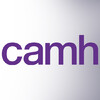Maintenance of Response After rTMS for Depression Using tDCS (START)
Major Depressive Disorder

About this trial
This is an interventional treatment trial for Major Depressive Disorder focused on measuring tDCS, Mindfulness meditation, Home-based tDCS, rTMS
Eligibility Criteria
Inclusion Criteria:
- History of Major Depressive Disorder with most recent depressive episode treated with acute rTMS
- Individuals capable to provide consent who are receiving care as outpatients/research participants, and are now responders or remitters (defined by 50% improvement on any depression scale since the beginning of treatment and HRSD-17 ≤ 15, or an HRSD-17 score <8).
- Age 18-85, inclusive.
Exclusion Criteria:
- History of a DSM-IV substance use disorder within the past three months
- Concomitant major unstable medical illness
- DSM-IV diagnosis of any psychotic disorder, obsessive compulsive disorder, or post-traumatic stress disorder (current or within the last year) as confirmed by the Mini-International Neuropsychiatric Interview (MINI)
- DSM-IV diagnosis of personality disorder as assessed by a study investigator
- Any significant neurological disorder (e.g., a space occupying brain lesion, a history of stroke, a cerebral aneurysm, a seizure disorder, Parkinson's disease, Huntington's chorea, multiple sclerosis)
- Presenting with a medical condition, a medication, or a laboratory abnormality that could cause a major depressive episode or significant cognitive impairment in the opinion of the investigator (e.g., hypothyroidism with low TSH, Cushing's disease)
- Any intracranial implant (e.g., aneurysm clips, shunts, cochlear implants) or any other metal object within or near the head, excluding the mouth, that cannot be safely removed
- Any dermatological disorder or any cuts/broken skin in the scalp region that may affect the safe delivery of the tDCS stimulus
- Requiring a benzodiazepine with a dose equivalent to lorazepam 2 mg/day or higher or any anticonvulsant due to the potential of these medications to limit the efficacy of tDCS
- The inability to communicate in spoken and written English fluently enough to complete the neuropsychological tests due to a language barrier or a non-correctable clinically significant sensory impairment (i.e., cannot hear or see well enough to complete the neuropsychological tests).
- Cognitive impairment or physical impairment such that they are unable to learn to, or physically unable to apply tDCS to their scalp without assistance (after training).
Sites / Locations
- Centre for Addiction and Mental HealthRecruiting
- Toronto Western HospitalRecruiting
Arms of the Study
Arm 1
Arm 2
Experimental
Sham Comparator
active tDCS + mindfulness meditation
sham tDCS + mindfulness meditation
Participants randomized to this group will receive active tDCS 3 times a week for approximately 3 months and then weekly for 3 months. After completing baseline procedures they will be trained how to apply the tDCS device themselves. The first 3-6 treatments will be completed at the hospital to ensure proper and safe application. Prior to taking the tDCS device home, they will pass the self-application scale adequately 3 times. Each treatment session lasts 30 minutes, during which, they will engage in mindfulness meditation.
Participants randomized to this group will receive sham tDCS 3 times a week for approximately 3 months and then weekly for 3 months. After completing baseline procedures they will be trained how to apply the tDCS device themselves. The first 3-6 treatments will be completed at the hospital to ensure proper and safe application. Prior to taking the tDCS device home, they will pass the self-application scale adequately 3 times. Each treatment session lasts 30 minutes, during which, they will engage in mindfulness meditation.
Outcomes
Primary Outcome Measures
Secondary Outcome Measures
Full Information
1. Study Identification
2. Study Status
3. Sponsor/Collaborators
4. Oversight
5. Study Description
6. Conditions and Keywords
7. Study Design
8. Arms, Groups, and Interventions
10. Eligibility
12. IPD Sharing Statement
Learn more about this trial
